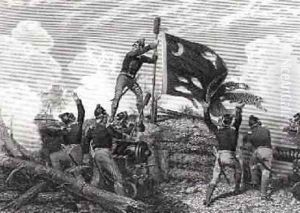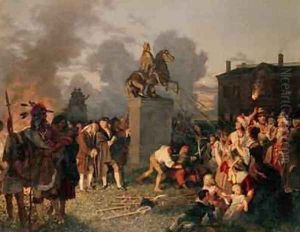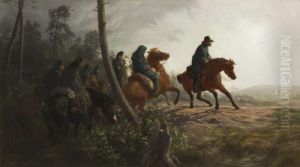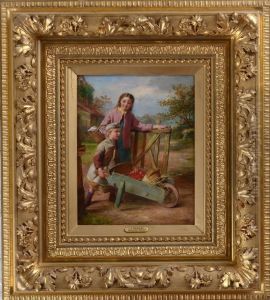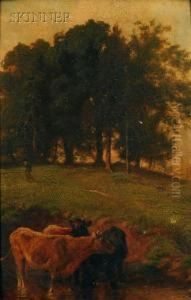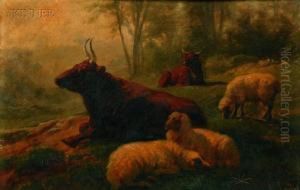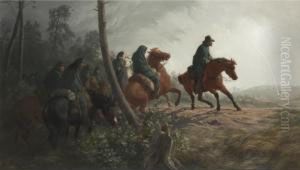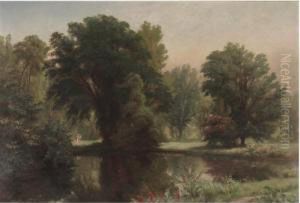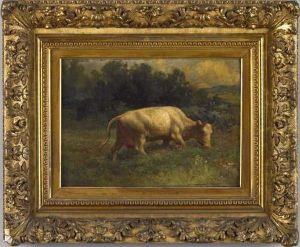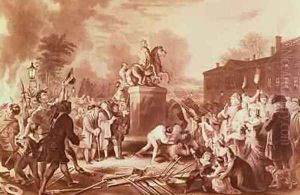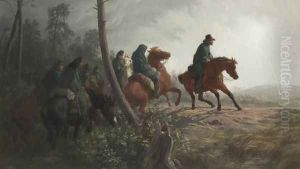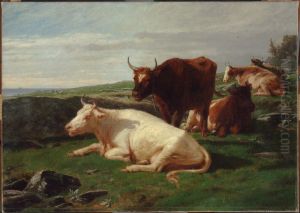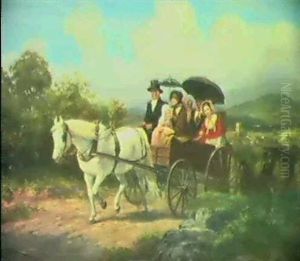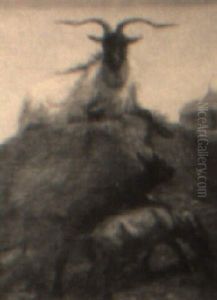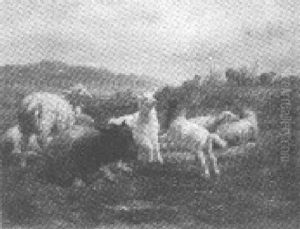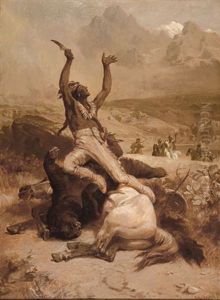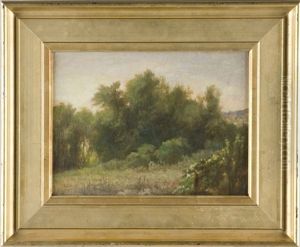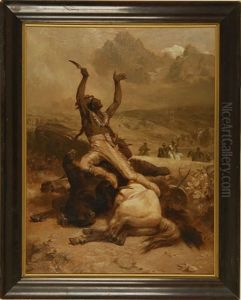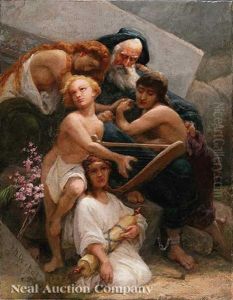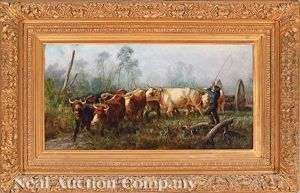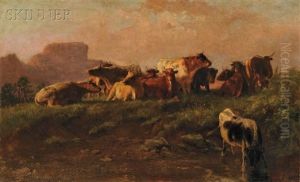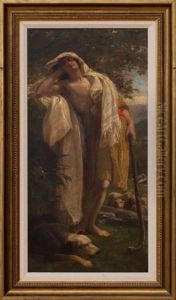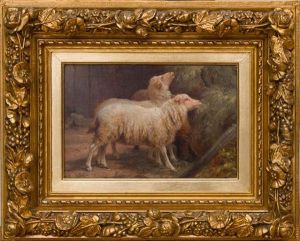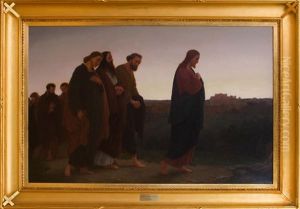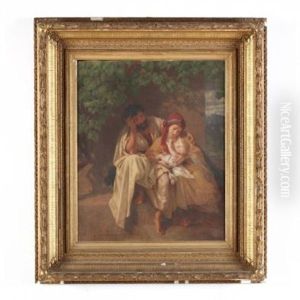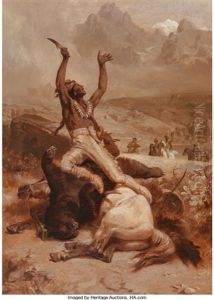Johannes Adam Simon Oertel Paintings
Johannes Adam Simon Oertel was a German-born American painter, engraver, and Episcopal clergyman, whose life and career spanned two continents and a multitude of artistic and spiritual endeavors. Born on August 3, 1823, in Fürth, Bavaria, Germany, Oertel found his passion in the arts early on. He received his artistic training in Nuremberg and later at the Munich Academy, one of the most prestigious art schools of the time. His early work was influenced by the rich artistic traditions of Europe, and he developed a keen interest in religious themes, which would become a hallmark of his career.
After immigrating to the United States in 1848, Oertel's work began to reflect the new landscapes and societal influences he encountered. Settling initially in Newark, New Jersey, he made a living as an engraver and portrait painter. His talent quickly earned him recognition, and he became known for his ability to capture both the physical and spiritual essence of his subjects. Oertel's religious convictions deepened over time, and he felt a strong call to the ministry. This dual vocation of artist and clergyman set him apart in the American art scene of the 19th century.
In 1856, Oertel moved to the South, where he continued to paint while also becoming increasingly involved in religious activities. He was ordained as an Episcopal deacon in 1859 and as a priest in 1867. Throughout the Civil War and afterward, Oertel's work took on a reflective quality, often exploring themes of redemption, sacrifice, and the divine in nature. His paintings from this period, characterized by their luminous quality and spiritual depth, are considered some of his finest.
Oertel's later years were marked by both personal and professional challenges, including the loss of his home and studio to fire. Despite these setbacks, he remained committed to his artistic and spiritual pursuits, traveling across the United States to preach and exhibit his work. He held various teaching positions, including at the University of the South in Sewanee, Tennessee, where he influenced a new generation of artists and theologians.
Johannes Oertel's legacy is one of profound artistic and spiritual influence. His work is a testament to his belief in the power of art to inspire faith and reflection. He passed away on December 9, 1909, in Pawley's Island, South Carolina, leaving behind a body of work that continues to be appreciated for its depth, beauty, and sincerity. Oertel's life story is a remarkable journey of creativity, faith, and resilience, reflecting the complex interplay between art and spirituality that defined his career.
